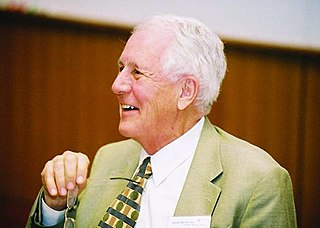Glowworm or glow-worm is the common name for various groups of insect larvae and adult larviform females that glow through bioluminescence. They include the European common glow-worm and other members of the Lampyridae, but bioluminescence also occurs in the families Elateridae, Phengodidae and Rhagophthalmidae among beetles; as well as members of the genera Arachnocampa, Keroplatus and Orfelia among keroplatid fungi’s gnats.

Arachnocampa is a genus of nine fungus gnat species which have a bioluminescent larval stage, akin to the larval stage of glowworm beetles. The species of Arachnocampa are endemic to Australia and New Zealand, dwelling in caves and grottos, or sheltered places in forests.

Tomás de Mercado (1525–1575) was a Spanish Dominican friar and both an economist and a theologian, best known for his book Summa de Tratos y Contratos of 1571. Together with Martín de Azpilcueta he founded the economic tradition of "Iberian monetarism"; both form part of the general intellectual tradition often known as "Late Scholasticism", or the School of Salamanca.

Dismals Canyon is a sandstone gorge near Phil Campbell in Franklin County, Alabama. It was declared a National Natural Landmark in May 1974.

Insects are pancrustacean hexapod invertebrates of the class Insecta. They are the largest group within the arthropod phylum. Insects have a chitinous exoskeleton, a three-part body, three pairs of jointed legs, compound eyes and one pair of antennae. Their blood is not totally contained in vessels; some circulates in an open cavity known as the haemocoel. Insects are the most diverse group of animals; they include more than a million described species and represent more than half of all known living organisms. The total number of extant species is estimated at between six and ten million; potentially over 90% of the animal life forms on Earth are insects. Insects may be found in nearly all environments, although only a small number of species reside in the oceans, which are dominated by another arthropod group, crustaceans, which recent research has indicated insects are nested within.

John Woodland "Woody" Hastings, was a leader in the field of photobiology, especially bioluminescence, and was one of the founders of the field of circadian biology. He was the Paul C. Mangelsdorf Professor of Natural Sciences and Professor of Molecular and Cellular Biology at Harvard University. He published over 400 papers and co-edited three books.
Diptera is an order of winged insects commonly known as flies. Diptera, which are one of the most successful groups of organisms on Earth, are very diverse biologically. None are truly marine but they occupy virtually every terrestrial niche. Many have co-evolved in association with plants and animals. The Diptera are a very significant group in the decomposition and degeneration of plant and animal matter, are instrumental in the breakdown and release of nutrients back into the soil, and whose larvae supplement the diet of higher agrarian organisms. They are also an important component in food chains.

Héctor Canavery was an Argentine politician and military man, who took part in the military campaigns in the territory of Patagonia. He also dabbled in politics, serving as a legislator for the National Autonomist Party.

Isoneuromyia semirufa is a Palearctic species of 'fungus gnat' in the family Mycetophilidae. As larvae, the members of this genus are web spinners that are chiefly associated with dead wood where they feed on fungal hyphae. They can also be found in turf, grass tussocks, under logs and boulders, in worm tunnels, and among mosses and liverworts. They were discovered in 2006 in China: Zhejiang province: Wuyanling National Natural Reserve, Yiping Wang along with 3 Isoneuromyia Isoneuromyia baumhaueri, Isoneuromyia signata and orfelia semirufa

Pterostylis rufa, commonly known as the red rustyhood is a plant in the orchid family Orchidaceae and is endemic to south-eastern Australia. It has a rosette of leaves and up to fifteen bright reddish-brown flowers with translucent white "windows" and a dark brown, insect-like labellum. It occurs from southern Queensland to south-eastern South Australia.

Mycetophilinae is a subfamily of fungus gnats in the family Mycetophilidae. There are more than 30 genera and 2,000 described species in Mycetophilinae. There are two tribes, Exechiini and Mycetophilini.

Elizabeth Gault Fisher was an American entomologist, bacteriologist, and bryologist. She collected thousands of examples of Maryland mosses, including the first examples of a number of species in Maryland. A moss, Desmatodon fisherae, and an insect, Mycetophila fisherae, were named for her.










